Bradley Byrne confirms illegal immigrants will not be housed in Baldwin County

Alabama 1st District U.S. Rep. Bradley Byrne on Tuesday tweeted there are no plans to house immigrants at the Navy airfields in south Baldwin County. “BREAKING: My office has learned that there are no plans to house illegal immigrants at Navy airfields in south Baldwin County! This was a bad idea from the start, and I am pleased it will not come to fruition,” Byrne tweeted upon receiving confirmation from the Department of Homeland Security (DHS) and Immigration and Customs Enforcement (ICE). BREAKING: My office has learned that there are no plans to house illegal immigrants at Navy airfields in south Baldwin County! This was a bad idea from the start, and I am pleased it will not come to fruition. — Rep. Bradley Byrne (@RepByrne) August 14, 2018 “Housing illegal immigrants at ill-equipped airfields along the Gulf Coast was always a terrible idea, so I appreciate the confirmation that this plan is no longer being considered,” Byrne said in a statement following his tweet. “We had a team effort to push back this flawed idea, and I especially want to thank Baldwin County Commissioners Chris Elliott and Tucker Dorsey and Baldwin County Sheriff Hoss Mack for their advocacy on this issue.” Byne continued, While I am glad this issue is resolved, we must continue working to secure the border and eliminate the need for additional housing for illegal immigrants altogether. I remain 100% committed to working with President Trump to build a border wall, hire additional border patrol officers, and ensure our border security is as strong as possible.” Byrne led an effort in Washington in June to express opposition to housing up to 10,000 illegal immigrants at Naval Outlying Field Silverhill and Naval Outlying Field Wolf in south Baldwin County. He joined other members of the Alabama and Florida Congressional delegations in sending a letter to Secretary of Defense James Mattis and Secretary of Homeland Security Kirstjen Nielson outlining concerns with the proposal. Byrne also hosted Baldwin County officials in Washington for a series of meetings to convene local concerns with the proposal. Read the letter from ICE Deputy Director Ronald Vitiello below:
Bradley Byrne leads colleagues in opposition to Baldwin County immigration site
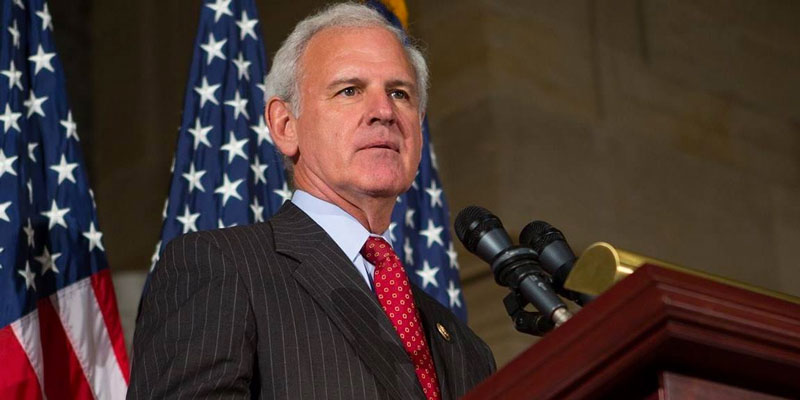
Alabama 1st District U.S. Rep. Bradley Byrne on Tuesday lead a group of colleagues from Alabama and Florida in sending a letter to urge the Department of Homeland Security (DHS) and the Department of Defense (DOD) to halt efforts to house illegal immigrants at two Navy outlying airfields in south Baldwin County, Alabama. In a letter to Secretary of Defense James Mattis and Secretary of Homeland Security Kirstjen Nielsen, the Members of Congress outlined why the lack of infrastructure at the airfields and the unique coastal environment make the sites completely unacceptable for housing. “I appreciate my Alabama and Florida colleagues joining me to express our serious concerns about any proposal to house illegal immigrants in Baldwin County,” Byrne said of the letter. “I am hopeful our concerns will be taken seriously and this flawed idea will be taken off the table, just like it was back in 2016.” Within the Alabama delegation, the letter was signed by all the Republican House Members: 4th District U.S. Rep. Robert Aderholt, 5th District U.S. Rep. Mo Brooks, 6th District U.S. Rep. Gary Palmer, 2nd District U.S. Rep. Martha Roby, and 3rd District U.S. Rep. Mike Rogers. The full text of the letter can also be found below. Dear Secretary Mattis and Secretary Nielson: We write to express strong opposition to the consideration of Naval Air Station Whiting Field’s Naval Outlying Field (NOLF) Silverhill in Silverhill, Alabama and NOLF Wolf in Orange Beach, Alabama as detention facilities for illegal immigrants detained from the U.S. southern border as these locations cannot adequately meet the needs of housing and sustaining migrants. While the Department of Homeland Security (DHS) has not formally asked the Department of Defense (DOD) for assistance to house migrants, it has come to our attention that DHS is working with DOD to develop a plan to house immigrants in temporary tent structures, including the possibility of using the above-mentioned sites. These locations are undeveloped military airfields. They lack even basic infrastructure, such as running water, housing, or restroom facilities, to provide even rudimentary needs for detained immigrants. Given this lack of infrastructure, individuals would be housed in tents and potentially exposed to disease carrying insects that are prevalent in the coastal environment. There are also serious natural hazards that should be taken into consideration at these sites. The Gulf Coast region is prone to severe weather including hurricanes, tornadoes, flash floods, thunder storms, severe heat waves, and high humidity. These natural hazards could present serious risks to those housed at these facilities, particularly to those housed in tent structures, as well as the personnel responsible for overseeing the facilities. Additionally, having to evacuate an additional 25,000 individuals from the airfields would place a further strain on what is already a complex hurricane evacuation system. This is not the first time a proposal has been made to use these airfields to house illegal immigrants. In 2016, the Obama Administration ultimately abandoned a similar effort to use these sites after intense pushback from Congress and local officials. During that discussion, based upon similar arguments, the House of Representatives passed an amendment to the annual Military Construction and Veterans Affairs Appropriations bill (H.R. 4974), which barred funds in the bill from being used to modify a military installation in the United States to provide temporary housing for unaccompanied alien children. H.R. 4974, with the amendment included, passed the House on May 19, 2016, by a bipartisan vote of 295 to 129. It is our sincere hope that the Trump Administration will come to the same conclusion that these airfields are not a legitimate option to house illegal immigrants. To be clear, we look forward to working with the Trump Administration to ensure that our nation’s immigration laws are fully enforced and to stem the flow of illegal immigrants at our nation’s southern border. As we work together, we hope you can assure us that the naval airfields in Baldwin County will not be used to house illegal immigrants.
Jim Zeigler asks DHS to cancel plan to house illegal detainees in Baldwin County
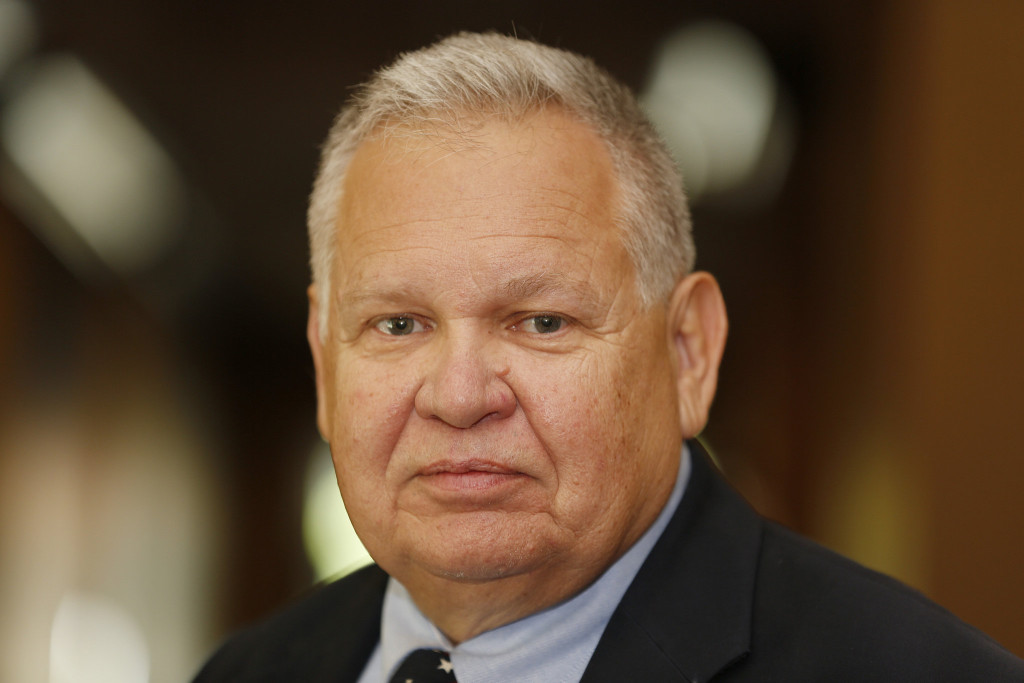
Time reported on Friday it had obtained an internal document that details the U.S. Navy’s plans to construct “temporary and austere” tent cities to house 25,000 illegal immigrants in the Yellowhammer State at two abandoned airfields — Navy Outlying Field Wolf in Orange Beach and Navy Outlying Field Silverhill — and Alabama State Auditor Jim Zeigler is trying to stop them. Zeigler, a resident of nearby Mobile County, sent a formal request to the U.S. Department of Homeland Security (DHS)Secretary Kirstjen Nielsen asking her to cancel the plans to construct two tent cities in Baldwin County. Zeigler says the plan is “terribly flawed.” He cited four problems with the plan: The area is a hurricane zone. “This area is a hurricane zone,” said Zeigler. “A tent city in a hurricane zone is dangerous for the detainees and the staff. It would be difficult and costly to quickly evacuate the detainees when a hurricane heads our way, which happens frequently. This site is totally inappropriate for the intended purpose.” High temps and humidity. Zeigler continued, “The area has high temperatures and humidity. There will be no air conditioning in a tent city. Other geographical areas are available without the heat and humidity. The site selection authority needs to be fired.” It’s near the state’s booming tourist industry. “The area is in or near Alabama’s booming tourist industry and highest revenue-generating area,” Zeigler explained. “Tourism and revenues would be adversely affected by these sites. Optional areas are available that are isolated and are not vital to tourism and revenue generation.” Security. “Security is a continuous problem with a sprawling tent city in a residential area,” Zeigler added. “Escapees can commit crimes in the nearby neighborhoods. Isolated areas are available that would not have this problem.”
Lawmakers seek Puerto Rico exemption to law that slowed aid

Republicans and Democrats in Congress are pushing to exempt Puerto Rico from a federal law that prohibits foreign-flagged ships from shuttling goods between U.S. ports. President Donald Trump temporarily waived the Jones Act last month amid criticism that the once-obscure law hindered relief efforts to in Puerto Rico following Hurricane Maria. The 10-day waiver expired on Sunday night and was not renewed. A spokesman for the Department of Homeland Security said an extension was not needed to support relief efforts on the island, adding that there’s “an ample supply” of U.S.-flagged vessels to ensure cargo reaches Puerto Rico. Sen. John McCain, R-Ariz., said Monday that the expiration of the Jones Act waiver added renewed urgency to his push to permanently exempt Puerto Rico from what he called an “archaic and burdensome law.” “Until we provide Puerto Rico with long-term relief, the Jones Act will continue to hinder much-needed efforts to help the people of Puerto Rico recover and rebuild from Hurricane Maria,” he said. Rep. Nydia Velázquez, D-N.Y., said the temporary waiver should be extended for at least a year while Congress debates a permanent exemption for Puerto Rico. “Significant numbers of Puerto Ricans remain displaced and still lack food, drinking water and electricity,” she wrote in a letter to Trump. “If the Jones Act is reinstated, building supplies will cost significantly more in Puerto Rico, compared to costs on the mainland. This will serve only to slow Puerto Rico’s long-term recovery.” The Trump administration initially said a waiver was not needed because there were enough U.S.-flagged ships available to ferry goods to Puerto Rico. Delays in getting relief supplies to Puerto Rico occurred because of bottlenecks that resulted from the island’s damaged ports and blocked roads, not a lack of ships, officials said. Even so, Trump waived Jones Act restrictions on Sept. 28, just as he had done to help ease fuel shortages in the Southeast following hurricanes Harvey and Irma. Rep. Pramila Jayapal, D-Wash., called the Jones Act “incredibly important to our country’s economy and to the maritime industry,” which she said supports nearly 500,000 jobs and is responsible for more than $92 billion in annual gross economic output. In Washington state, the Jones Act supports more than 16,000, mostly unionized jobs, Jayapal said. “Without these jobs, our economy would suffer tremendously,” she said. “To be clear, everywhere in the country where we have Jones Act jobs, they are better jobs, better wages and a better future for our Americans across the country,” Jayapal said last week in a speech on the House floor. Republished with permission from the Associated Press.
Donald Trump to look at even stricter cap on refugees

President Donald Trump is considering a further reduction in the number of refugees allowed into the United States as the administration works to re-shape American immigration policy, officials say. Trump has already slashed refugee admissions once since taking office. Now he faces a decision on how many to admit in the next budget year. As is often the case with the Trump administration, Cabinet officials are divided as they weigh the costs and potential security risks associated with the program. The Department of Homeland Security has been pushing for a reduction beyond the 50,000 maximum-entry mark set by Trump earlier this year as part of his travel ban executive orders — a number that is already the lowest in modern American history. In a proposal submitted late last week, the department called for a reduction to 40,000 refugees in the next budget year starting Oct. 1, citing concerns about its workload and ability to adequately vet those seeking entry. The State Department, which oversees the program, has formally recommended that the number be kept at 50,000, according to Trump administration officials who spoke on condition of anonymity in order to discuss internal deliberations. Agencies had been given until the close of business Wednesday to submit formal recommendations for consideration. State Department officials would have been inclined to set their recommendation higher, several of the people said, but were taking their cues from the president’s executive order and felt that 50,000 was the highest number that would be palatable to him. Trump has until Oct. 1, the start of the new fiscal year, to determine how many refugees to admit under the Refugee Act of 1980. He is expected to consider the issue over the weekend, after he finishes up at the U.N. General Assembly in New York, one White House official said. The U.S. welcomed 84,995 refugees in fiscal year 2016, and former President Barack Obama had wanted to raise that number to 110,000 in 2017. Trump has made limiting immigration the centerpiece of his policy agenda. He temporarily banned visitors from a handful of Muslim-majority nations, has rescinded an Obama-era executive action protecting young immigrants from deportation and insists he’ll build a wall along the southern border. During his campaign, Trump pledged to “stop the massive inflow of refugees” and warned that terrorists were smuggling themselves into naive countries by posing as refugees fleeing war-torn Syria. “Thousands of refugees are being admitted with no way to screen them and are instantly made eligible for welfare and free health care, even as our own veterans, our great, great veterans, die while they’re waiting online for medical care that they desperately need,” Trump said last October. Instead, Trump has advocated keeping refugees closer to their homes. In a speech to the United Nations on Tuesday, Trump thanked Jordan, Turkey and Lebanon for taking in hundreds of thousands of refugees from the Syrian conflict, and described the United States as a “compassionate nation” that has spent “billions and billions of dollars in helping to support this effort.” “We seek an approach to refugee resettlement that is designed to help these horribly treated people, and which enables their eventual return to their home countries to be part of the rebuilding process,” he said, arguing that for the cost of resettling one refugee in the United States, the U.S. can assist more than 10 migrants in their home regions. Advocates say that misses the point. “I think that these comments show a basic misunderstanding of the refugee crisis,” said Jen Smyers, who helps run the immigration and refugee program at Church World Service, one of nine organizations that work to resettle refugees in the U.S. She said the safe re-integration of refugees into their home countries is always the preferred outcome, followed by integration in a nearby country that shares a refugee’s language and culture. Resettlement is a last resort when those options are impossible. Refugees already face an extensive backlog and waiting periods that can take years. Smyers said that after Trump’s executive order, she had to tell refugees in the pipeline they’d be waiting even longer. “It’s devastating for refugees who are overseas,” she said. Stacie Blake, of the U.S. Committee for Refugees and Immigrants, said the proposed cutbacks were especially concerning given the migrant crises affecting so many parts of the world, including the Rohingya Muslim refugees fleeing Myanmar. She said Trump’s move could prompt other nations to “back out” as well. White House spokeswoman Kelly Love said in a statement that the administration’s approach to refugee resettlement “is unwavering” and would be “guided by the safety and security of the American people, the protection of U.S. taxpayers, and the application of U.S. resources in a manner that stretches our dollars to help the most people.” DHS spokesman David Lapan said that in setting the admissions ceiling, the agency would take into account the “workload capacity of all program partners, including the vetting agencies” as well as national security interests. Simon Henshaw, the top State Department official for refugees, said the decision was ultimately Trump’s. Republished with permission from the Associated Press.
Leaked NSA doc highlights deep flaws in US election system
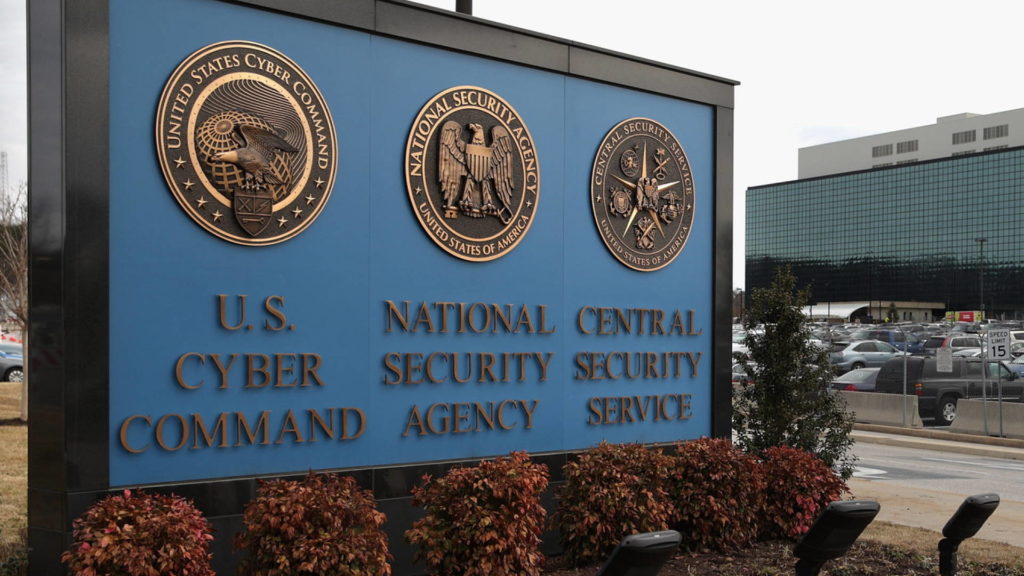
A leaked intelligence document outlining alleged attempts by Russian military intelligence to hack into U.S. election systems is the latest evidence suggesting a broad and sophisticated foreign attack on the integrity of the nation’s elections. And it underscores the contention of security experts and computer scientists that the highly decentralized, often ramshackle U.S. election system remains profoundly vulnerable to trickery or sabotage. The document, purportedly produced by the U.S. National Security Agency, does not indicate whether actual vote-tampering occurred. But it adds significant new detail to previous U.S. intelligence assessments that alleged Russia-backed hackers had compromised elements of America’s electoral machinery. It also suggests that attackers may also have been laying groundwork for future subversive activity. The operation described in the document could have given attackers “a foothold into the IT systems of elections offices around the country that they could use to infect machines and launch a vote-stealing attack,” said J. Alex Halderman, a University of Michigan computer scientist. “We don’t have evidence that that happened,” he said, “but that’s a very real possibility.” Computer scientists have proven in the lab that once sophisticated attackers are inside an election network, they could manipulate pre-election programming of its systems and alter results without leaving a trace. Sen. Mark Warner of Virginia, the ranking Democrat on the Senate intelligence committee, said Tuesday that hacking into state voting systems ahead of the Nov. 8 vote was more widespread than has been disclosed. Attempts by Russia to “break into a number of our state voting processes” was “broad-based,” he said, without offering details. In Moscow, a Kremlin spokesman categorically denied Tuesday that Moscow had tried to hack the U.S. elections. Warner did not directly address the classified intelligence report published Monday by The Intercept, an online news outlet. The Associated Press has not independently verified the authenticity of the report, although its apparent leaker, an NSA contract worker, was arrested last weekend in Georgia. The NSA document says Russian military intelligence first targeted employees of a Florida voting systems supplier in August. Apparently exploiting technical data obtained in that operation, the cyber spies later sent phishing emails to more than 100 local U.S. election officials just days ahead of the Nov. 8 vote, intent on stealing their login credentials and breaking into the their systems, the document says. The emails packed malware into Microsoft Word documents and were forged to give the appearance of being sent by the system vendor, VR Systems of Tallahassee, Florida. The Department of Homeland Security knew in September that hackers believed to be Russian agents had targeted the voter registration systems of more than 20 states. To date, no evidence of tampering with vote tallies or registration rolls has emerged. The U.S. elections system is a patchwork of more than 3,000 jurisdictions overseen by the states with almost no federal oversight or standards. The attack sketched out in the NSA document appears designed specifically to cope with that sprawl. The NSA document did not name any of the states where local officials were targeted by the emails masquerading as being from VR Systems. But in September, the FBI held a conference call with all 67 county elections supervisors in the battleground state of Florida to inform them of infiltration of VR Systems without naming the company. Ion Sancho, who retired as Leon County supervisor in December, said he later learned from industry contacts that it was VR Systems. VR Systems officials did not respond directly to questions emailed by the AP. In a statement, the company said it only knows of a “handful” of customers who received the fraudulent email, adding that it had “no indication” that anyone had clicked on the malware. The NSA document says at least one account was likely compromised. The company makes software for on-site voter registration at polling stations and backend systems for voting management, according to its website, which says it has customers in California, Florida, Illinois, Indiana, New York, North Carolina, Virginia, and West Virginia. VR Systems’ electronic poll books – electronic systems used to verify registered voters at polling places – experienced problems on Nov. 8 in Durham County, North Carolina. The issue forced officials to abandon the system, issue paper ballots and extend voting hours. North Carolina’s state elections director said Tuesday that officials would investigate to see if officials in Durham County were targeted and possibly compromised. Iowa University’s Douglas Jones is among computer scientists who say voter registration systems are particularly vulnerable to tampering, in part because they are on the internet. Someone trying to cause chaos and discredit an election could delete names from registration rolls prior to voting – or request absentee ballots en masse. In the latter case, a voter showing up at the polls on Election Day would be recorded as having already cast their ballot. That could force voters to file provisional ballots, and provoke long lines. There is no evidence any of that happened last Election Day. Republished with permission of The Associated Press.
States scramble to comply with federal ID law
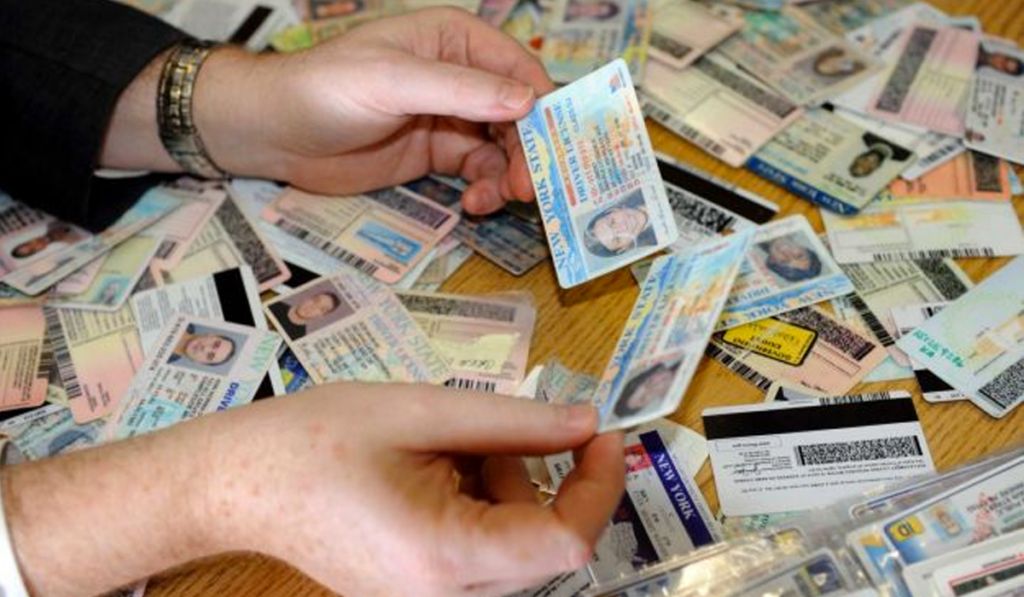
Several states have struggled for years to comply with the REAL ID Act, a 2005 federal law that requires state driver’s licenses and ID cards to have security enhancements and to be issued to people who can prove they are legally in the United States. With a January deadline looming, lawmakers across the country have been scrambling for legislative fixes so residents can board flights and travel without confusion. Washington state was the latest to try to bring its system in line with those requirements, as Gov. Jay Inslee signed a measure Tuesday creating a two-tiered licensing system. Here’s a look at the federal law and the potential impacts: — REAL ID ACT The law was passed by Congress after the 2001 terrorist attacks to strengthen rules for government-sanctioned identification. It sets minimum standards for government-issued identification such as driver’s licenses that are required to enter certain areas in federal buildings or board commercial airplanes. Those standards include requiring applicants to provide proof of identity and legal US residency, and states to use counterfeit-resistant security features in the IDs. — STATUS OF STATES’ COMPLIANCE Just 25 states and the District of Columbia are currently in compliance with the federal law, though most of the remaining states and territories have been granted extensions of various dates, according to the Department of Homeland Security’s website . Maine, Minnesota, Missouri and Montana are the only states currently listed as not compliant with the law and without an extension from the federal government. However, Maine’s governor last month signed a REAL ID compliance bill passed by the Legislature, and Montana and Missouri this year have both passed bills awaiting their governors’ signatures. Several other states are considering bills related to REAL ID compliance, including Alaska, Minnesota, Oregon and Pennsylvania. Governors in Kentucky, Oklahoma and South Carolina also have signed REAL ID compliance bills this year. — WHY HAVE SOME STATES BALKED AT FOLLOWING THE FEDERAL RULE? Some liberal and conservative states have objected to the new rules, with concerns ranging from discrimination to worries that law-abiding U.S. citizens could be tracked using the new system. Others have opposed the U.S. government unilaterally setting standards in an area traditionally handled by states. —— WHAT LACK OF COMPLIANCE MEANS FOR STATES Residents of states that are in compliance have until Oct. 21, 2020, before being required to show the REAL ID compliant identification. Residents of states that aren’t in compliance with REAL ID and don’t have an extension need additional identification for access to some military bases and federal facilities and, starting on Jan. 22, 2018, to board commercial flights. — WHAT WASHINGTON STATE’S NEW LAW DOES Washington state already offers – but does not mandate – enhanced driver’s licenses and IDs that require proof of U.S. citizenship and are valid under the federal law. The state also issues standard licenses that don’t comply with the federal rule. Starting in July 2018, those standard licenses will be marked to indicate they are not REAL ID compliant. People will have a choice of which license they want. Those with the non-compliant licenses will need additional documentation – such as a passport or permanent resident card – to board domestic commercial flights, most likely starting in October 2020. Republished with permission of the Associated Press.
U.S. to expand pool of people targeted for deportation
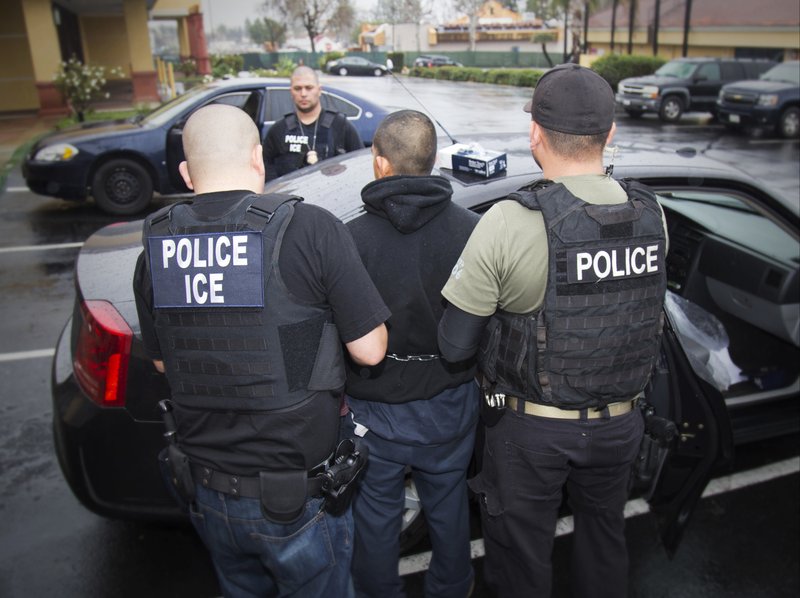
The Trump administration is greatly expanding the number of people living in the U.S. illegally who are considered a priority for deportation, including people arrested for traffic violations, according to agency documents released Tuesday. The documents represent a sweeping rewrite of the nation’s immigration enforcement priorities. The Homeland Security Department memos, signed by Secretary John Kelly, lay out that any immigrant living in the United States illegally who has been charged or convicted of any crime — and even those suspected of a crime — will now be an enforcement priority. That could include people arrested for shop lifting or minor traffic offenses. The memos eliminate far more narrow guidance issued under the Obama administration that resources strictly on immigrants who had been convicted of serious crimes, threats to national security and recent border crossers. Kelly’s memo also describes plans to enforce a long-standing but obscure provision of the U.S. Immigration and Nationality Act that allows the government to send some people caught illegally crossing the Mexican border back to Mexico, regardless of where they are from. One of the memos says that foreigners sent back to Mexico would wait for their U.S. deportation proceedings to be complete. This would be used for people who aren’t considered a threat to cross the border illegally again, the memo said. It’s unclear whether the United States has the authority to force Mexico to accept foreigners. That provision is almost certain to face opposition from civil libertarians and officials in Mexico. Historically, the government has been able to quickly repatriate Mexican nationals caught at the border but would detain and try to formally deport immigrants from other countries, routinely flying them to their home countries. In some cases, those deportations can take years as immigrants ask for asylum or otherwise fight their deportation in court. The memos do not change U.S. immigration laws, but take a far harder line toward enforcement. The pair of directives do not have any impact on President Barack Obama‘s program that has protected more than 750,000 young immigrants from deportation. The Deferred Action for Childhood Arrivals remains in place though immigrants in the program will be still be eligible for deportation if they commit a crime or otherwise are deemed to be a threat to public safety or national security, according to the department. Republished with permission of The Associated Press.
Donald Trump moving forward with border wall, weighs refugee cuts

President Donald Trump will use his executive authority Wednesday to jumpstart construction of his proposed U.S.-Mexico border wall, one of his signature campaign promises. He is also expected to target so-called sanctuary cities and potentially restrict the flow of refugees to the United States, according to administration officials. The president will sign the first actions — including the measure authorizing work on the wall —during a trip to the Department of Homeland Security Wednesday afternoon. He’ll also move to increase the number of border patrol and Immigration and Customs Enforcement agents. On his personal Twitter account Tuesday night, Trump tweeted: “Big day planned on NATIONAL SECURITY tomorrow. Among many other things, we will build the wall!” The president is said to still be weighing the details of plans to curb the number of refugees coming to the U.S. The current proposal includes at least a four-month halt on all refugee admissions, as well as a temporary ban on people coming from some Muslim-majority countries, according to a source from a public policy organization that monitors refugee issues. The person was briefed on the details of that proposed action by a government official and outlined the plan to The Associated Press. The officials and the public policy organization source insisted on anonymity in order to outline the plans ahead of the president’s official announcements. Trump campaigned on pledges to tighten U.S. immigration policies, including strengthening border security and stemming the flow of refugees. His call for a border wall was among his most popular proposals with supporters, who often broke out in chants of “build that wall” during rallies. In response to terrorism concerns, Trump controversially called for halting entry to the U.S. from Muslim countries. He later turned to a focus on “extreme vetting” for those coming from countries with terrorism ties. While the specifics of Trump’s orders were unclear, both administration officials said Wednesday’s actions would focus in part on the president’s plans to construct a wall along the southern border with Mexico. He’s also expected to move forward with plans to curb funding for cities that don’t arrest or detain immigrants living in the U.S. illegally — localities dubbed “sanctuary” cities — which could cost individual jurisdictions millions of dollars. Trump has insisted that Mexico will pay for construction of the border wall, though he has not detailed how he make that happen given the Mexican government’s insistence that it will not cover the costs. Earlier this month, Trump said the building project would initially be paid for with a congressionally approved spending bill and Mexico would eventually reimburse the U.S. Trump is expected to discuss the matter with Mexican President Enrique Pena Nieto when he visits the White House next week. In claiming authority to build a wall, Trump may rely on a 2006 law that authorized several hundred miles of fencing along the 2,000-mile frontier. That bill led to the construction of about 700 miles of various kinds of fencing designed to block both vehicles and pedestrians. The Secure Fence Act was signed by then-President George W. Bush, and the majority of that fencing in Texas, New Mexico, Arizona and California was built before he left office. The last remnants were completed after President Barack Obama took office in 2009. The Trump administration also must adhere to a decades-old border treaty with Mexico that limits where and how structures can be built along the border. The 1970 treaty requires that structures cannot disrupt the flow of the rivers, which define the U.S.-Mexico border along Texas and 24 miles in Arizona, according to The International Boundary and Water Commission, a joint U.S.-Mexican agency that administers the treaty. Other executive actions expected Wednesday include ending what Republicans have labeled a catch-and-release system at the border. Currently, some immigrants caught crossing the border illegally are released and given notices to report back to immigration officials at a later date. If Trump’s actions result in those caught being immediately jailed, the administration would have to grapple with how to pay for additional jail space and what to do with children caught crossing the border with their parents. It appeared as though the refugee restrictions were still being finalized. The person briefed on the proposals said they included a ban on entry to the U.S. for at least 30 days from countries including Iran, Iraq, Libya, Somalia, Sudan and Yemen, though the person cautioned the details could still change. There is also likely to be an exception for those fleeing religious persecution if their religion is a minority in their country. That exception could cover Christians fleeing Muslim-majority nations. As president, Trump can use an executive order to halt refugee processing. Bush used that same power in the immediate aftermath of the Sept. 11 attacks. Refugee security vetting was reviewed and the process was restarted several months later. Republished with permission of The Associated Press.
Homeland Security pick cites securing border as top priority
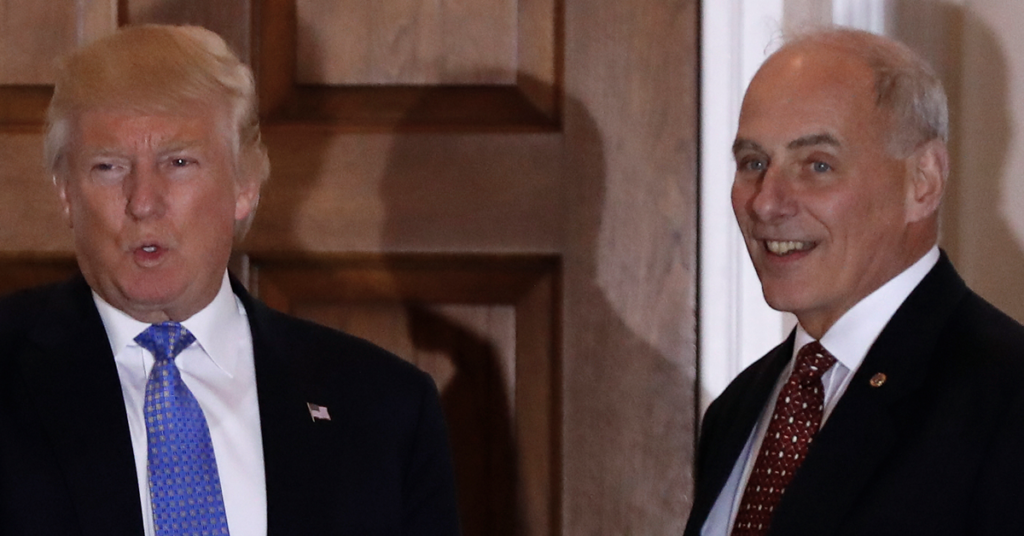
Donald Trump‘s choice to lead the Department of Homeland Security says closing the border to the “illegal movement of people and things” will be his top priority if confirmed. Retired Marine Gen. John Kelly outlined his priorities in a detailed questionnaire to senators. The questionnaire was released Tuesday ahead of Kelly’s confirmation hearing later in the day. Kelly embraced Trump’s call for a strong border wall with Mexico. He said that achieving his top priority of shutting down illegal movements “starts with physical obstacles like a border wall and supporting surveillance technologies.” He said it will also require constant patrols from federal and local law enforcement. The confirmation of Kelly, a retired Marine general, is almost assured, but members of the Senate Homeland Security and Governmental Affairs Committee will likely use the hearing to debate the tough immigration and border security policies that were centerpieces of Trump’s presidential campaign. Kelly is one of several retired generals tapped for top positions by Trump. That has raised some concerns about undue military influence in his administration, weakening the American tradition of civilian control of government. But Kelly is widely respected by Democrats and Republicans alike, and his military experience is applicable to his Homeland Security role. He’s the former head of the military’s Southern Command, based in South Florida, which routinely works with the Department of Homeland Security to combat human trafficking and drug smuggling. The military command has also partnered with Immigration and Customs Enforcement, a part of Homeland Security, to help rescue unaccompanied child immigrants trying to make their way from Central America to the United States alone. In the questionnaire, Kelly said he is committed to telling “truth to power.” The commitment addresses concerns that some lawmakers have about the president-elect’s willingness to take in points of view that clash with his own. Kelly told the committee that his that his greatest successes during 40-plus years in the military are: “taking care of my people, speaking ‘truth to power,’ and successfully completing every mission I have ever been assigned.” He said he has worked with many senior U.S. officials during his career. “I never hesitated to disagree with any of them, or make difficult recommendations when appropriate,” Kelly said. Also, in newly released ethics disclosures, Kelly said that if confirmed he will resign positions with multiple consulting and government contractor firms and defense contractor DynCorp. Kelly listed his salary with DynCorp, a company awarded a 2016 contract from DHS to train Immigration and Customs Enforcement agents, as more than $166,000. In a statement prepared for the Senate hearing, Republican chairman Ron Johnson of Wisconsin praised Kelly as having a “deep knowledge and understanding of the grave security threats facing our nation and the sacrifices that are required to keep us safe.” Kelly joined the Marine Corps in 1970. He is a battle-hardened, blunt-talking veteran who served three tours in Iraq. He was also the highest-ranking officer to lose a child in combat in Iraq or Afghanistan. His son, Marine 1st Lt. Robert Kelly, was killed in November 2010 in Afghanistan. Kelly would be the fifth person to lead the department, which includes agencies that protect the president, respond to disasters, enforce immigration laws, protect the nation’s coastlines, stop drug smuggling and secure air travel. Kelly, in his statement for the committee, said he has a “profound respect for the rule of law” and as secretary “will always strive to uphold it.” That is likely to resonate with Republicans, who have complained that President Barack Obama has been too lax in his enforcement of immigration laws and have generally supported Trump’s proposals. Trump has vowed to deport millions of immigrants living in the U.S. illegally, focusing first on criminals. Kelly is likely to be asked his views on how to accomplish that. Trump pledged during the campaign to build a border wall – and have Mexico pay for it – though since winning the White House he has softened his stance on both the kind of barrier he wants and how it will be financed. Last week, Republicans suggested the wall could be paid for from regular spending legislation authorized by Congress. Trump insists that Mexico would reimburse the United States for the costs, but Mexico says it will not do so. Republish with permission of The Associated Press.
DHS, DOL refuse to investigate lawmaker claims of abuse in visa program for specialty workers
A second federal agency has refused to look into claims that companies are using a popular visa program to displace American workers with cheap labor, ALToday.com has learned. In early April, a bipartisan group of senators led by U.S. Sen. Jeff Sessions and Senate Minority Whip Dick Durbin had urged the departments of Justice, Labor, and Homeland Security to investigate alleged abuses of the H-1B visa program. On April 23, a DOL official responded stating that the agency “lacks a basis to initiate an investigation.” The Department of Homeland Security issued a response late last week saying that the agency would not be pursuing an investigation of the H-1B program. The H-1B program allows employers to hire immigrant workers with highly specialized knowledge or education. Information from the Department of Labor website says that the program is intended to help companies that can’t find American workers with needed skills. The senators claimed to have gotten reports that at least one large company, Southern California Edison, was using the program to replace and undercut wages for American workers. “The U.S. is graduating twice as many STEM students each year as find jobs in those fields, yet the H-1B program continues to provide IT companies with a large annual supply of lower-wage guest workers to hire in place of more qualified Americans,” Senators Session and Durbin said in a joint news release. “There is no ‘shortage’ of talented Americans, only a shortage of officials willing to protect them.” According to reports by the Los Angeles Times, Southern California Edison officials deny that they are seeking to displace U.S. workers, and have vowed to “cooperate with any investigation” initiated by the senators. The DHS response to the senators’ letter came from U.S. Citizenship and Immigration Services Director Leon Rodriguez. Rodriguez wrote, “… it would be premature for USCIS to speculate as to whether Southern California Edison’s participation in the H-1B program has violated any laws. If facts come to our attention that indicate violations have occurred, USCIS will take appropriate action to maintain the integrity of our programs.” In a prepared statement, the senators said they were “disappointed” with the DHS response. “We did not ask for speculation; we asked for an investigation, and an explanation of any legal obstacles to conducting such an investigation.” Meanwhile, applications for the temporary visa program reached their congressionally mandated limit for the third year in a row, CNBC reported. According to that same story, USCIS began accepting 2016 applications in early April and met the 65,000 cap in just one week.


